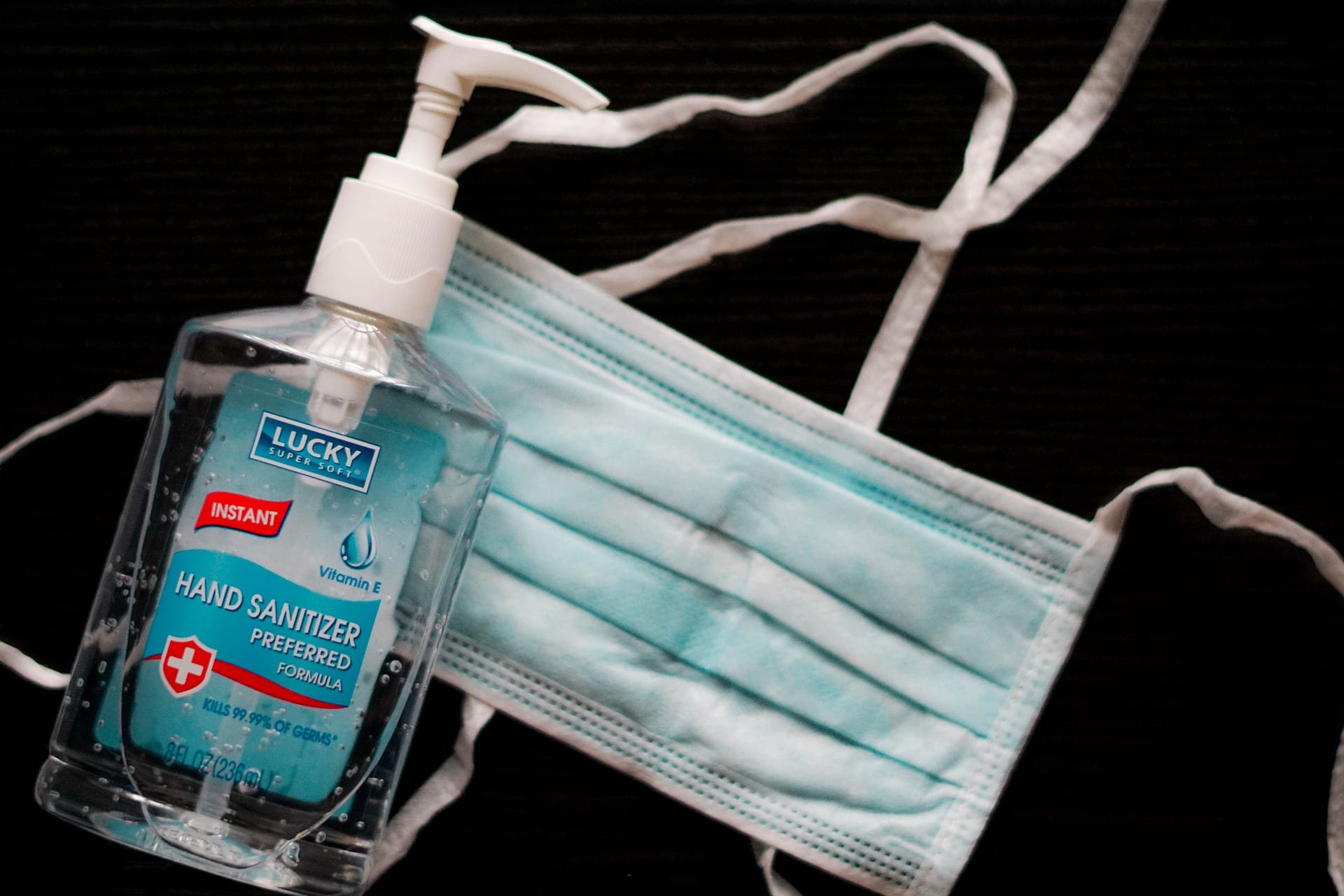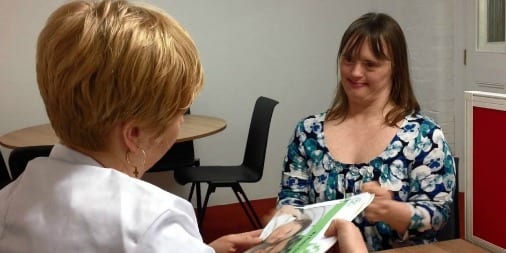The ongoing coverage of our 50th anniversary year has chronicled significant developments in the lives of people who have Down’s syndrome. There is much to celebrate. People who have Down’s syndrome are living much longer, enjoying lives included in their community, with greater independence, which might encompass paid employment and living in their own accommodation. Throw a global pandemic into that equation and we quickly realise there are many factors which mean people who have Down’s syndrome are still very vulnerable.
A Broken System
The UK does not have an integrated national health and care service. Provision provided in hospitals and primary care settings (the NHS) is separate from social care. We will have all observed, with growing concern, how older people living in care homes seem to have been neglected, as the outbreak of COVID-19 took hold here. Nowadays, fewer people who have Down’s syndrome are likely to be living in care homes, many will live in supported-living settings or rely on support in their family homes, funded through a Direct Payment. This type of social-care is possibly the most precarious. We have long fought for greater levels of funding for this type of provision and providers (many of which are charities or small-scale providers focusing on a local area) are struggling to meet the demands this pandemic is placing upon them. Our recent It’s My Life survey detailed how many families fail to secure an adequate level of support and that the assessment process is often lacking in understanding of need.
 We must acknowledge that there is some great work going on. Many providers have reacted quickly and with innovative ideas and are continuing to provide excellent support, with staff going above and beyond their job descriptions to ensure the risks are reduced to an absolute minimum. However, the system has not always supported this. We know that access to Personal Protective Equipment (PPE) has been difficult and supported living providers have not been included in bulk procurement of these essential items, which has been reserved for NHS settings, where the need was deemed to be greatest. Testing for individuals living in supported living (and for the staff who support them) has been problematic, but is now improving. The time it has taken to resolve this problem is a great frustration to all working in the sector.
We must acknowledge that there is some great work going on. Many providers have reacted quickly and with innovative ideas and are continuing to provide excellent support, with staff going above and beyond their job descriptions to ensure the risks are reduced to an absolute minimum. However, the system has not always supported this. We know that access to Personal Protective Equipment (PPE) has been difficult and supported living providers have not been included in bulk procurement of these essential items, which has been reserved for NHS settings, where the need was deemed to be greatest. Testing for individuals living in supported living (and for the staff who support them) has been problematic, but is now improving. The time it has taken to resolve this problem is a great frustration to all working in the sector.
Sadly, we know that care work is not well paid and in some settings, turnover of staff is a major issue. Recruiting more people into the care workforce is a current Government priority. We need to be sure that the right people are recruited and the right level of training, support and working conditions are provided for them.
Research
We suspect that people who have Down’s syndrome are at greater risk of being more severely affected by the virus, due to many having underlying cardiac and respiratory conditions. Suspect is the only word we can use here, as currently we do not know for sure. It is essential we gather specific data relating to the experience of individuals who have Down’s syndrome in relation to contracting the virus, the typical progression of the virus for them and what treatment people access. It is why we are supporting international research collating this and we will be at the forefront of disseminating these findings.
 Health Consultations
Health Consultations
Just as important as access to critical care, is the routine healthcare for non-COVID-19 related health issues. The Down Syndrome Medical Interest Group UK & Ireland (DSMIG) expressed concern many weeks ago that usual health consultations from people who have Down’s syndrome had dropped, as families stayed away from their GP practice or A&E unit for fear of contracting the virus. This should be as much of a concern to us as the virus itself.
Balance
Some individuals with Down’s syndrome have been advised to ‘shield’, however the majority do not meet the criteria for the NHS to give this very specific advice. Families are understandably taking no unnecessary risks, but all the while have to balance the protective measures of keeping someone at home with the detrimental impact on individuals’ mental well-being and levels of independence. There are no easy answers and we should not treat all individuals as one group of people, where one response is appropriate to everyone. In time, this will apply to decisions families will need to make about their children returning to school. We are mindful of the longer-term impact on mental well-being on anyone being asked to isolate for long periods, perhaps until a vaccine becomes available.
Moving Forward
On 12 May, the Government published its COVID-19 Recovery Plan, outlining how the current lockdown measures will be eased. In it, the Government identifies people with a learning disability, as ‘vulnerable’ due to non-clinical factors, meaning that someone’s learning disability alone is enough to make them more vulnerable. The messages to date have been reasonably easy to understand, “stay at home”, but over the coming weeks and months these messages will change and become much more nuanced. Now more than ever, individuals who have Down’s syndrome will need help in understanding how to keep themselves safe.
At a time when the Coronavirus Bill 2020 gives certain ‘easements’ to local authorities to reorganise the way in which support is provided to people in their communities, the need for protection for people who have Down’s syndrome is even more pressing. Of course, we want people to be able to move about outside their homes and begin to resume their usual activities, as soon as this is safe, but we must recognise that, even adults who are very independent, will need help to understand our new ways of living.
Our COVID-19 Webpage
We quickly realised that their was a need for accessible information to explain many aspects of the pandemic. We regularly update our COVID-19 webpage with accessible resources focused on hand hygiene, staying at home, social distancing and so on. We will be adding to these as new recommendations are issued, for example, an accessible resource focused on wearing of face masks is in development.
Employment
Our WorkFit project supports many hundreds of adults who have Down’s syndrome in employment. Many of these jobs are in retail, hospitality and catering – sectors that have been most badly affected by the economy shutting down. As shops, cafes and restaurants begin to reopen, we very much hope these jobs will remain available to our candidates, but adults who have Down’s syndrome will need to make personalised, informed decisions about when they feel safe to return to work. We are on hand to support individuals and their employers through this process.
Mortality Figures
The Department of Health has recently undertaken to include, in their analysis of mortality figures for COVID-19, a measure of how many people with a learning disability have died. We will be following this data very closely and trying to drill-down into any specific experience of individuals who have Down’s syndrome. We must steal ourselves for the sadness that these figures might reveal. Every death will be a huge loss and we know that amongst those losses will be people who have Down’s syndrome.
Our ongoing work with the LeDeR programme is addressing the health inequalities of individuals with a learning disability. The work we were just beginning on mandatory learning disability awareness training for health and care staff seeks to look at the circumstances around the death of an individual with a learning disability and investigate whether any failings or inequality within the system contributed to that death. As has been widely covered in the media, a true analysis of mortality rates will only be possible some while from now, when a proper investigation of excess deaths across the population can be made.
We will be there, asking relevant questions, however difficult these may be.
